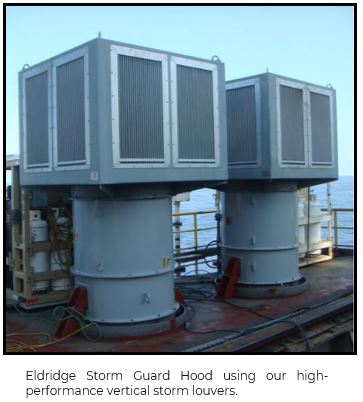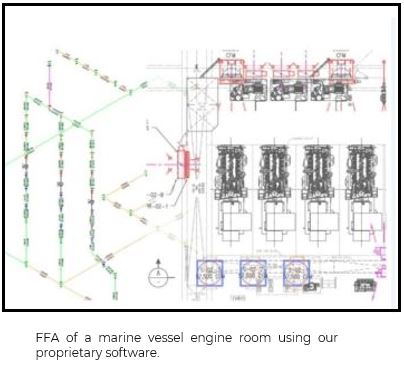A ventilation system is important for the safe and efficient operation of any marine vessel. When properly designed, a marine ventilation system plays two important roles. First, it provides fresh air flow to provide breathable air and balance humidity levels. This helps reduce maintenance by reducing the growth of mold and corrosion. Second, fresh air flow provides displaces heat for optimizing machinery performance and provides comfort cooling to crew members working in enclosed spaces so that they are more productive. We often get called by vessel owners who realize that their ventilation system was not properly designed to serve these two important roles. In this article, I’ll explain how Eldridge solves the challenge of redesigning marine ventilation systems.
Complex Systems
The most common reason why a marine ventilation system doesn’t work properly is because the system static pressure was over or underestimated. The reason that this happens frequently is because of the complex nature of the ventilation system. When marine vessel workspaces are located below deck, they need to be watertight. Also, these spaces have the risk of fires or explosions. For these reasons, marine ventilation systems are designed to have ducted air supply and exhaust with containment dampers along with weather louvers, volume control dampers and other specified ventilation equipment/accessories.
Now add in that limited space for ductwork may require combing some supply or exhaust lines for several spaces. Also, some marine ventilation systems have both supply and exhaust fans which work together and against each other. With all this design complexity, it is not hard to see how errors in calculating static pressure can occur.
Properly Solving Problems
We have seen some vessel owners try to solve ventilation problems by oversizing fans. They also try installing additional volume control dampers to balance air flow in each space. These types of solutions are very costly. Also, these solutions may restrict air flow which can push fan motors to horsepower limits or cause fan propellers to stall. Both problems will eventually cause the ventilation systems to fail resulting in vessel down time and other safety related issues.
The only way to properly redesign marine ventilation systems is to perform a fluid flow analysis (FFA). Eldridge uses proprietary FFA software to perform detailed calculations of the system pressure drops and air flows. What sets Eldridge’s FFA software apart from others is that we can program actual fan curves into the software. That allows us to specify properly selected fans to solve existing ventilation system problems.
Conclusion
Eldridge can provide solutions if your marine vessel suffers from an improperly designed ventilation system. We can also help if a cold weather rig with an undersized ventilation system is to be moved to a hotter climate. Contact an Eldridge Marine ventilation specialist to redesign your marine ventilation system for the safe and efficient operation of your marine vessel.
